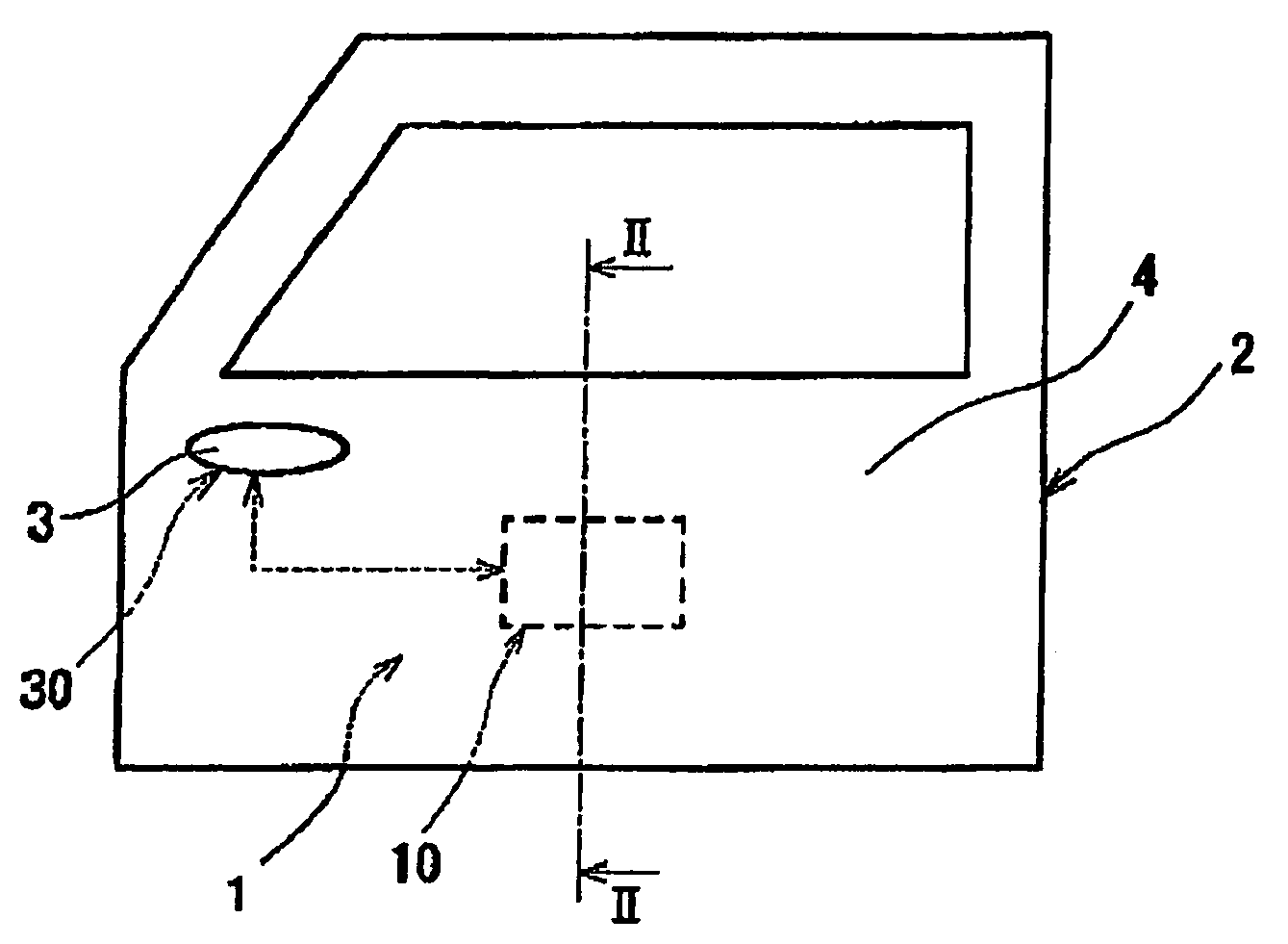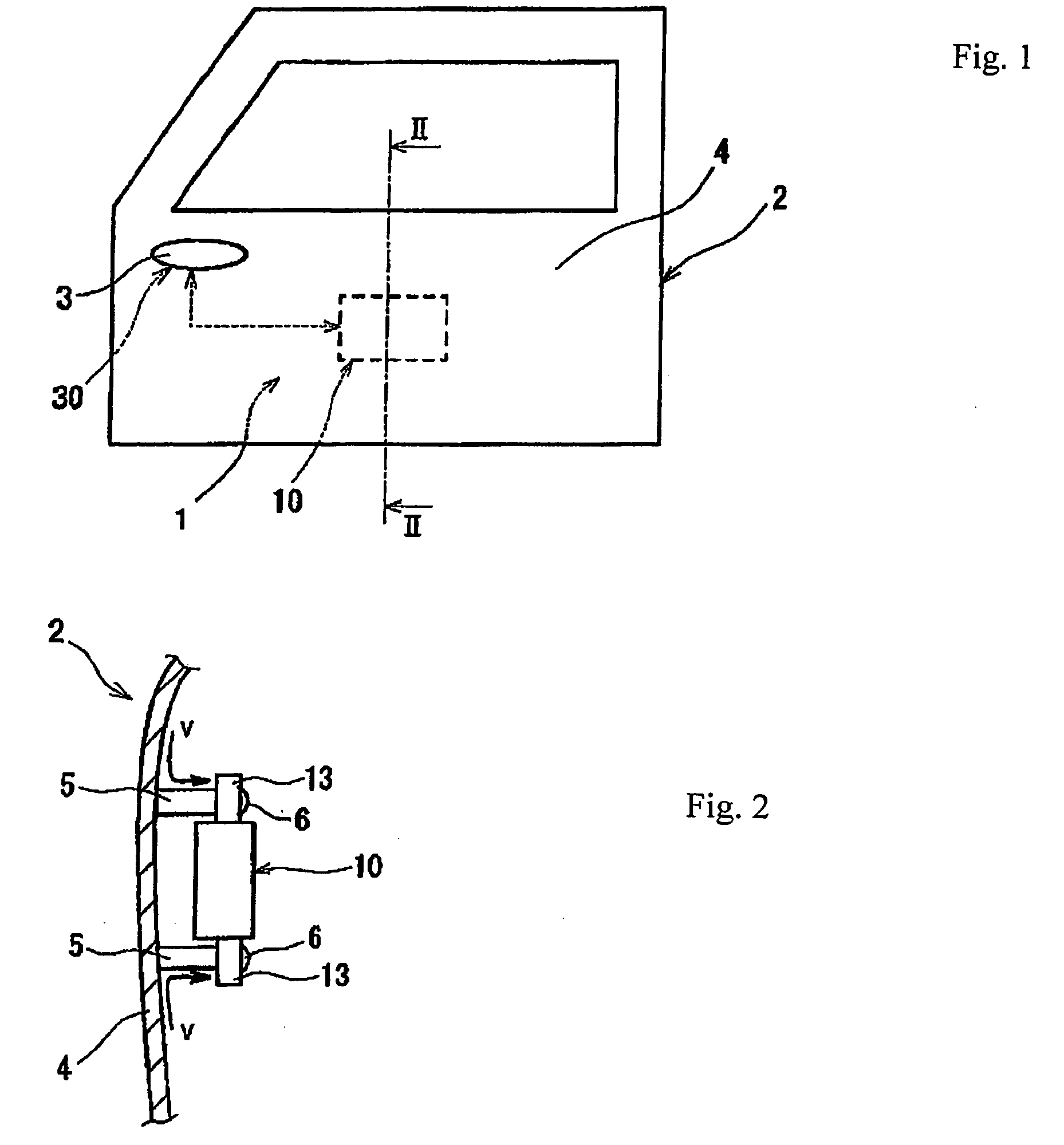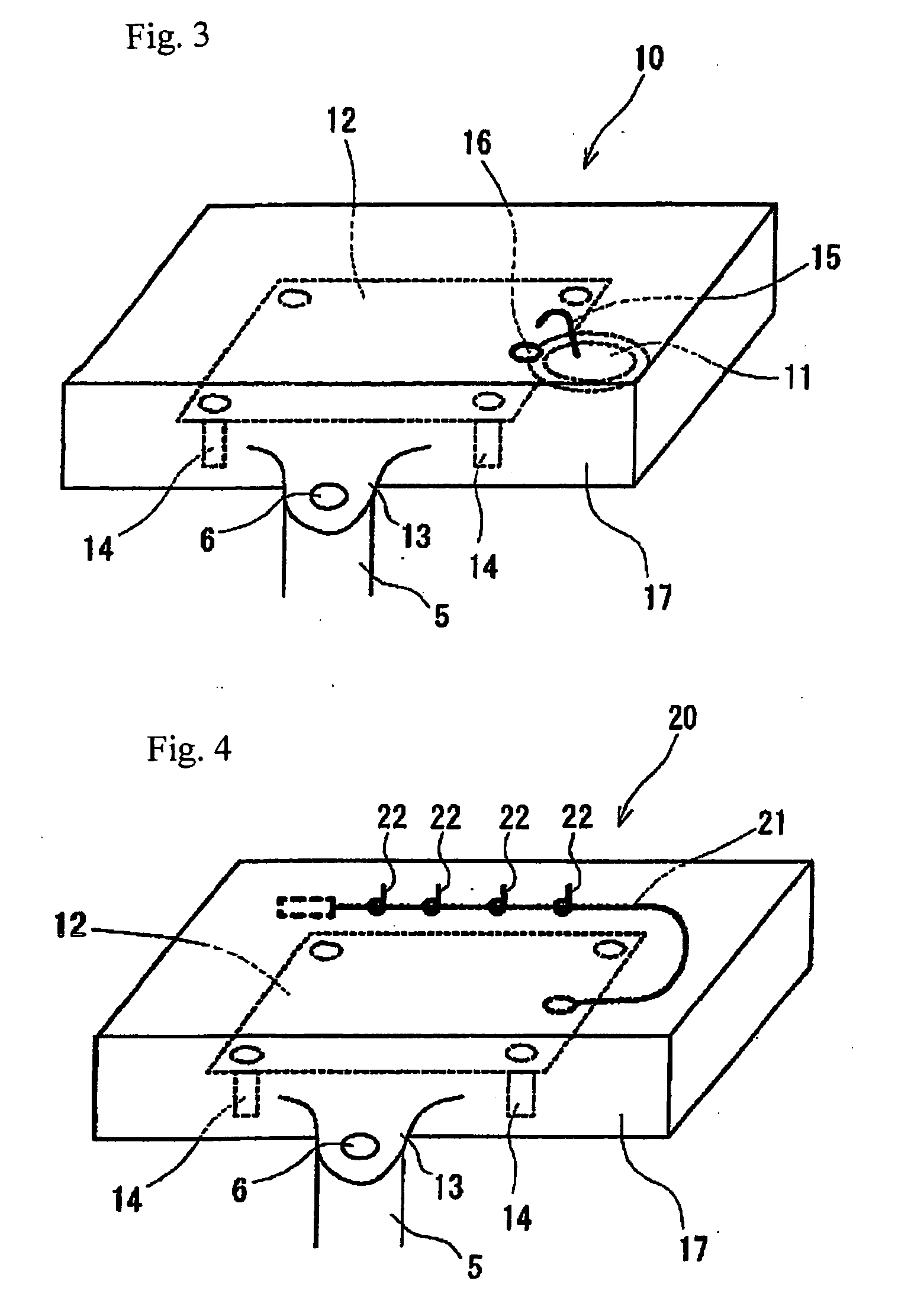Vehicle door opening-closing apparatus
- Summary
- Abstract
- Description
- Claims
- Application Information
AI Technical Summary
Benefits of technology
Problems solved by technology
Method used
Image
Examples
first embodiment
[0031]FIG. 1 is a schematic representation to show a slide door 2 (vehicle door) installing a vehicle door opening-closing apparatus 1 of the invention. In a first embodiment, the slide door 2 is a door automatically opened and closed by an actuator of a motor, etc., controlled by a door control section 18 described later. In the embodiment, a system for automatically controlling locking and unlocking and opening and closing the door, called smart entry system is installed in a vehicle including the slide door 2. Numeral 30 shown in FIG. 1 schematically indicates vehicle exterior recognition means as one of recognition means of the smart entry system. The vehicle exterior recognition means 30 includes a vehicle exterior driver for controlling communications with the user (occupant) getting off from the vehicle, a communication antenna, etc., (not shown). As one of recognition means of the smart entry system, vehicle interior recognition means (not shown) including a vehicle interior...
second embodiment
[0051]A second embodiment of the invention will be discussed. The topics previously described with reference to FIGS. 1 to 5, namely, the structure of vibration detection device 10, the shape determination method of the waveform of an envelope W, and the like are similar to those of the first embodiment and therefore will not be discussed again where appropriate. The second embodiment is a preferred embodiment if the opening or closing operation given by the user to a vehicle door such as a slide door 2 is successive striking of the vehicle door or an opening / closing operation section such as a door handle 3 provided on the vehicle door. For example, knocking twice or three times generally performed is a preferred embodiment of user's successive striking. A sensor circuit 12 as a control circuit determines whether or not the user performs vehicle door opening or closing operation based on a peak value P of an envelope W acquired at the first time, of successively acquired envelopes ...
third embodiment
[0067]A third embodiment of the invention will be discussed. The topics previously described with reference to FIGS. 1 to 5, namely, the structure of vibration detection device 10, the shape determination method of the waveform of an envelope W, and the like are similar to those of the first embodiment and therefore will not be discussed again where appropriate. The third embodiment is similar to the second embodiment in that an amplification factor is set based on the peak value P0 of the envelope W0 acquired at the first time, of successively acquired envelopes W and that whether or not the user performs vehicle door opening or closing operation is determined based on the shape of the envelope W1 acquired at the second time or later and therefore the topics will not be discussed again where appropriate. The third embodiment is a preferred embodiment for determining that a vibration signal S is generated based on non-operation input which is not general striking (knocking) of the u...
PUM
 Login to View More
Login to View More Abstract
Description
Claims
Application Information
 Login to View More
Login to View More - R&D
- Intellectual Property
- Life Sciences
- Materials
- Tech Scout
- Unparalleled Data Quality
- Higher Quality Content
- 60% Fewer Hallucinations
Browse by: Latest US Patents, China's latest patents, Technical Efficacy Thesaurus, Application Domain, Technology Topic, Popular Technical Reports.
© 2025 PatSnap. All rights reserved.Legal|Privacy policy|Modern Slavery Act Transparency Statement|Sitemap|About US| Contact US: help@patsnap.com



